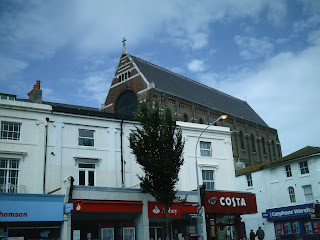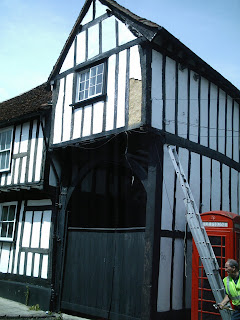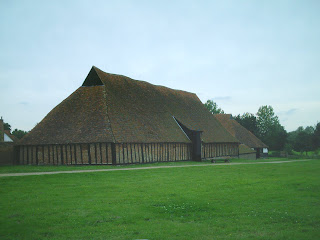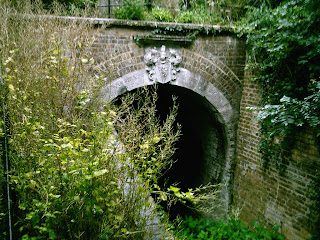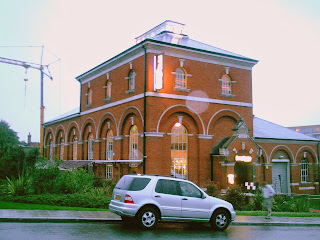Then raise the scarlet standard high
Within its shade we'll live and die
Though cowards flinch and traitors sneer
We'll keep the red flag flying here.
A day out to Thaxted and Saffron Walden.
Thaxted
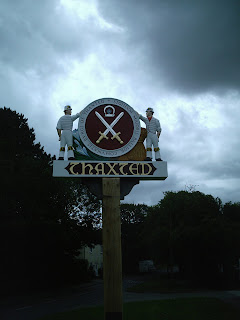
Thaxted had its market day today, but instead of the bustling 14th and 15th century market there were about five stalls that sold food and one that sold carpet. It did not seem to be a thriving market to me. The Post Office stores sold a lot of toys etc giving a real 1930s feel.
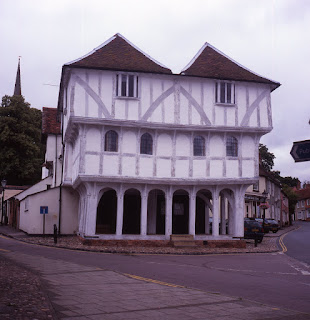

The guildhall or moothall of circa 1390 incorporates a lock up (for villains not a toilet see picture) and also has a museum closed Monday to Friday (except Bank Holidays). The real glory of Thaxted is its Church, remarkably free of memorials and very empty with tractarian chairs although laid out for a concert when I called. A sleepy village like this would be calming and extremely sleepy in the 1930s but Thaxted attracted its fair share of controversy. Rev'd Conrad Noel,
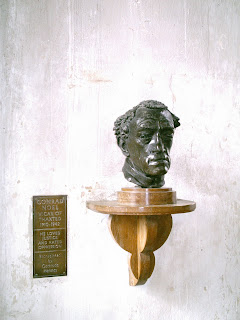
who loved justice and hated oppression was vicar here from 1910 until he died in 1942. Prominent in the Christian Socialist Movement he was given an Irish tricoleur in the church to hang in the church alongside the flag of St George, and, as these represented nationhood he decided to raise the red flag to represent the one in many and the many in one with the inscription 'He hath made of one blood all nations'. This was not pleasing to cambridge students who came down to Thaxted to dstart a riot. Eventually an ecclesiastical court decided that Noel could stay as vicar but the flags should be removed and they have been.
The church also has a wooden font cover that envelopes the font and is most unusual. In the churchyard is an old chantry that Conrad Noel converted into a single dwelling in 1933 and a row of three extremly pretty almshouse cottages converted in 1975.
The town trail leads to John Webb's windmill, closed Monday to Friday (except Bank Holidays), and from this there were some good views.
The town trail leads back to the village and past a house where Morris Dancing has its origins from 1911, encouraged by Mrs Noel.
There was a shelter that had been presented to commemorate the coronation of 1953, but this was not at the bus stop. There wasn't even a seat.
Saffron Walden
The town shield bears tulips within a wall - saffron walled in - and saffron is the foundation of the town's prosperity. Our most complete medieval town it did not get the refurbishment that York got in the eighteenth and nineteenth century.
I followed the town trail here from the Town hall of 1792 with victorian gable via the corn exchange, covered in scaffolfding. The former Sun Inn with marvelous pargetting (see illustration) 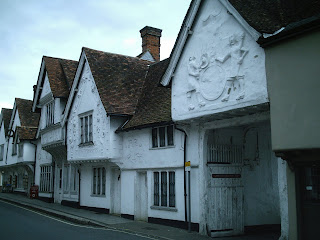 contained an antique shop and second hand bookshop with very expensive books (what I usually buy for £3.99 were on sale for £12.50 - the proprietor must love his stock).
contained an antique shop and second hand bookshop with very expensive books (what I usually buy for £3.99 were on sale for £12.50 - the proprietor must love his stock).
The Church is large and peaceful, the benches dwarfed by the soaring height of the nave, aisles and chancel.
There is a beautiful garden, the former retreat of a quaker family with connections to the prison reformer Elizabeth Fry was extremely relaxing and enjoyable.
The finest building of the meadieval period was the youth hostel. An essay in English vernacular architecture of the period.
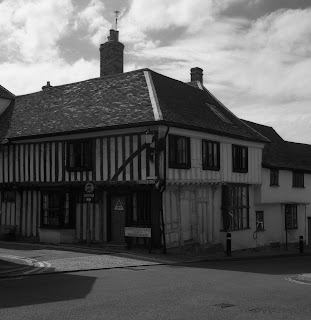



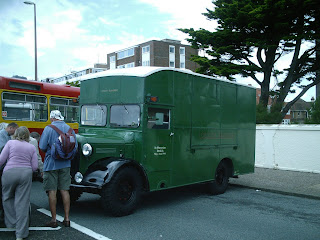 After a brief look at the preserved 'busses it was time to get on board the special open top 'bus route which led out to the villages near worthing, our aim was to get to Findon. But about two miles short of Findon the 'bus engine conked out and smoke started rising from the engine compartment. Oh dear. The driver poured water in (which someone from Loughton advised me might crack the cylinder head and cause more trouble), and we were waiting at the side of a busy and narrow road for half an hour before our relief bus arrived. (see illustration).
After a brief look at the preserved 'busses it was time to get on board the special open top 'bus route which led out to the villages near worthing, our aim was to get to Findon. But about two miles short of Findon the 'bus engine conked out and smoke started rising from the engine compartment. Oh dear. The driver poured water in (which someone from Loughton advised me might crack the cylinder head and cause more trouble), and we were waiting at the side of a busy and narrow road for half an hour before our relief bus arrived. (see illustration). 
